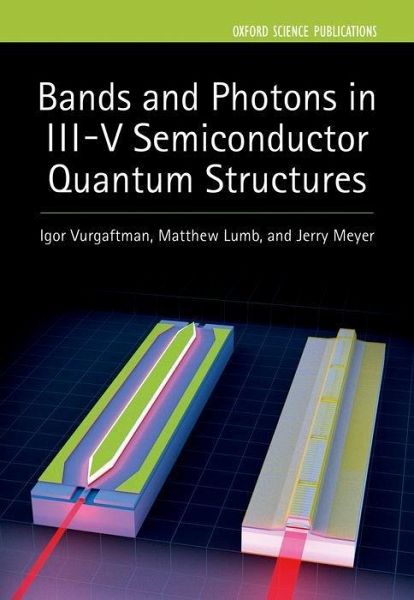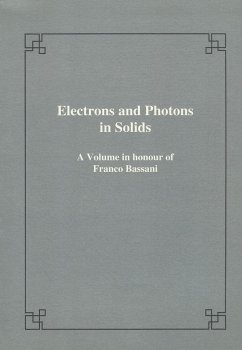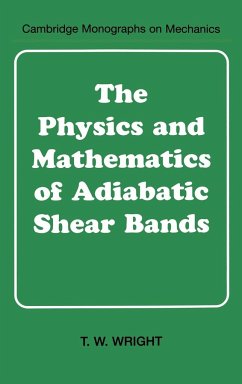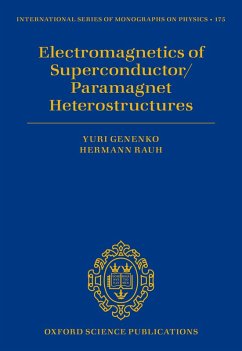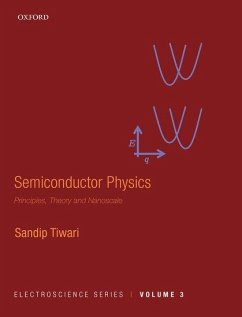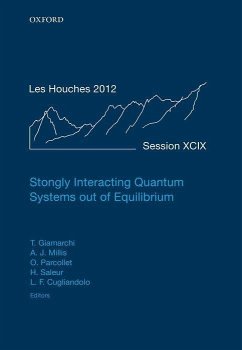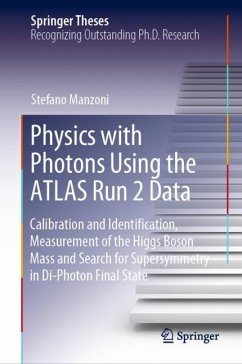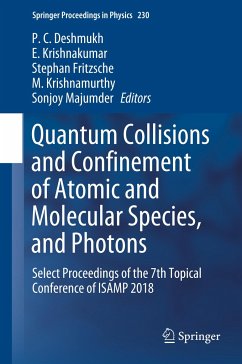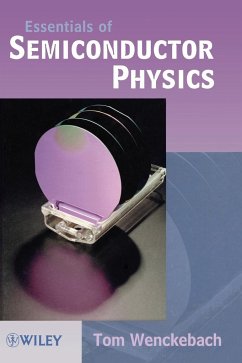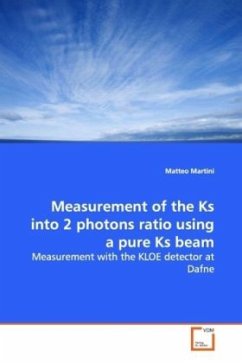Bands and Photons in III-V Semiconductor Quantum Structures
Versandkostenfrei!
Versandfertig in über 4 Wochen
Weitere Ausgaben:

PAYBACK Punkte
54 °P sammeln!




This book takes the reader from the very basics of III-V semiconductors (some preparation in quantum mechanics and electromagnetism is helpful) and shows how seemingly obscure results such as detailed forms of the Hamiltonian, optical transition strengths, and recombination mechanisms follow.
Dr. Igor Vurgaftman received the Ph. D. degree in electrical engineering from the University of Michigan. Since 1995 he has been with the Optical Sciences Division of the Naval Research Laboratory (NRL), where he is currently Head of the Quantum Optoelectronics Section. He is the author of more than 280 refereed articles in technical journals, cited more than 14,000 times (h-index of 46) as well as more than 20 patents. Dr. Vurgaftman is a Fellow of the American Physical Society and the Optical Society. Dr. Matthew Lumb received a Ph.D in Physics from Imperial College London in 2009. He was then appointed as lead device modeler for QuantaSol Ltd., manufacturing state of the art, multi-junction solar cells using strain-balanced quantum wells. In 2011, Dr. Lumb joined The George Washington University, based full time at the Naval Research Laboratory, in Washington DC, researching numerous aspects of optoelectronic devices, including high efficiency, multi-junction solar cells. He is currently principal investigator on an ARPA-E MOSAIC award, developing novel concentrator photovoltaic (CPV) arrays using micro-CPV cells. He has authored and co-authored over 120 journal articles and conference papers and holds 2 patents. Dr. Jerry Meyer received the Ph.D. in Physics from Brown University in 1977. Since then he has carried out basic and applied research at the U.S. Naval Research Laboratory, where he is Navy Senior Scientist for Quantum Electronics. His research has focused on semiconductor optoelectronic materials and devices, especially new classes of semiconductor lasers and detectors for the infrared. He is a recipient of the Presidential Rank Award (2016), ONR's Captain Robert Dexter Conrad Award for Scientific Achievement (2015), NRL's E. O. Hulbert Annual Science Award (2012), the IEEE Photonics Society Engineering Achievement Award (2012), the Dr. Dolores M. Etter Top Navy Scientists and Engineers of the Year Award (2008), and the NRL Edison Chapter Sigma Xi Award for Pure Science (2003). He has co-authored 390 refereed journal articles that have been cited more than 24,000 times (H-Index of 63), 37 patents, and 180 Invited, Plenary, Keynote, and Tutorial conference presentations.
Produktdetails
- Verlag: Oxford University Press
- Seitenzahl: 688
- Erscheinungstermin: 3. Februar 2021
- Englisch
- Abmessung: 249mm x 173mm x 38mm
- Gewicht: 1479g
- ISBN-13: 9780198767275
- ISBN-10: 0198767277
- Artikelnr.: 60000828
Herstellerkennzeichnung
Libri GmbH
Europaallee 1
36244 Bad Hersfeld
gpsr@libri.de
Für dieses Produkt wurde noch keine Bewertung abgegeben. Wir würden uns sehr freuen, wenn du die erste Bewertung schreibst!
Eine Bewertung schreiben
Eine Bewertung schreiben
Andere Kunden interessierten sich für



